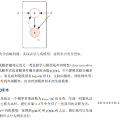Providing a human-understandable explanation of classifiers' decisions has become imperative to generate trust in their use for day-to-day tasks. Although many works have addressed this problem by generating visual explanation maps, they often provide noisy and inaccurate results forcing the use of heuristic regularization unrelated to the classifier in question. In this paper, we propose a new general perspective of the visual explanation problem overcoming these limitations. We show that visual explanation can be produced as the difference between two generated images obtained via two specific conditional generative models. Both generative models are trained using the classifier to explain and a database to enforce the following properties: (i) All images generated by the first generator are classified similarly to the input image, whereas the second generator's outputs are classified oppositely. (ii) Generated images belong to the distribution of real images. (iii) The distances between the input image and the corresponding generated images are minimal so that the difference between the generated elements only reveals relevant information for the studied classifier. Using symmetrical and cyclic constraints, we present two different approximations and implementations of the general formulation. Experimentally, we demonstrate significant improvements w.r.t the state-of-the-art on three different public data sets. In particular, the localization of regions influencing the classifier is consistent with human annotations.
翻译:虽然许多作品都通过提供直观解释图解图解来解决这个问题,但它们往往提供噪音和不准确的结果,迫使使用与相关分类者无关的湿度正规化。在本文件中,我们提出了克服这些限制的视觉解释问题的新总体观点。我们表明,视觉解释可以作为两种通过两种特定有条件的基因化模型生成的图像之间的差别而产生。两种基因化模型都经过培训,使用分类器来解释,并建立一个数据库来实施以下属性:(一) 第一个生成的图像与输入图像相似,而第二个生成的图像则被相反分类。 (二) 生成的图像属于真实图像的分布。 (三) 输入图像与相应生成图像之间的距离很小,因此生成的元素之间的差别只能显示与所研究的分类器相关的信息。使用对称和周期性制约,我们用两种不同的近似和数据库来执行一般配置。我们实验性地展示了与输入图像图像图像相类似的重大改进,而第二个生成的图像则被相反的分类。 (二) 生成图像属于真实图像的分布。 (三) 投入图像与不同层次的当地数据结构对不同。




